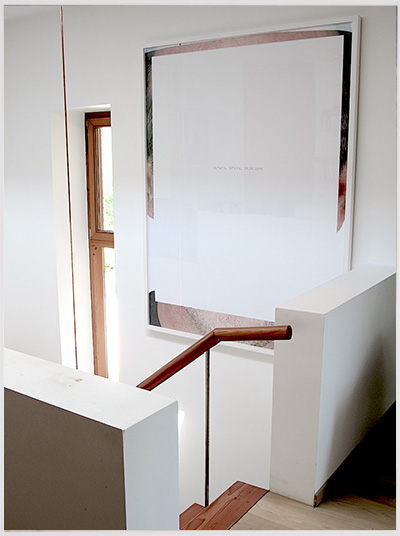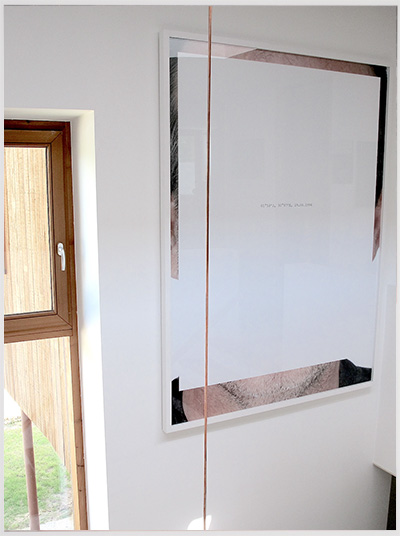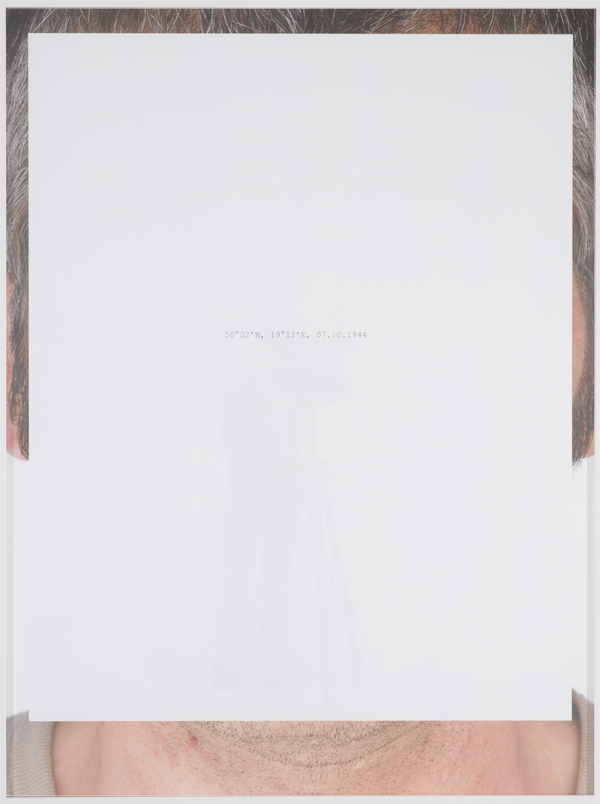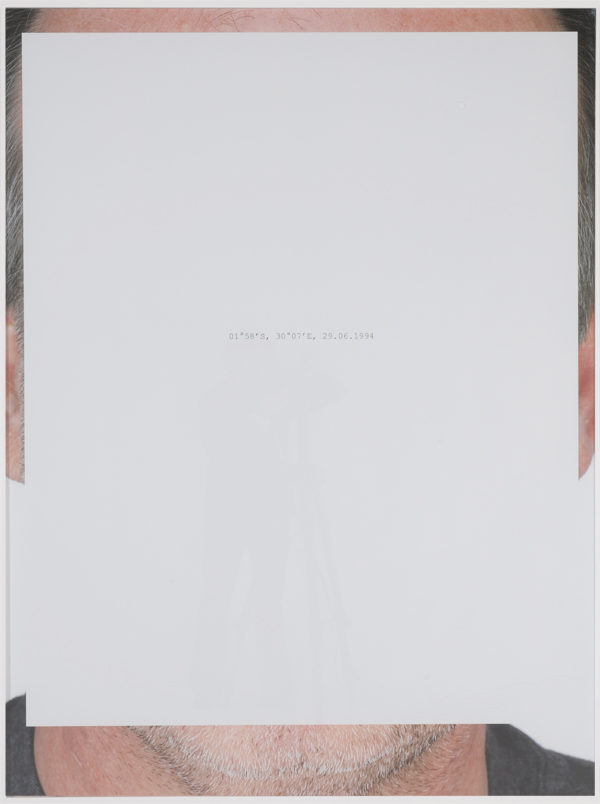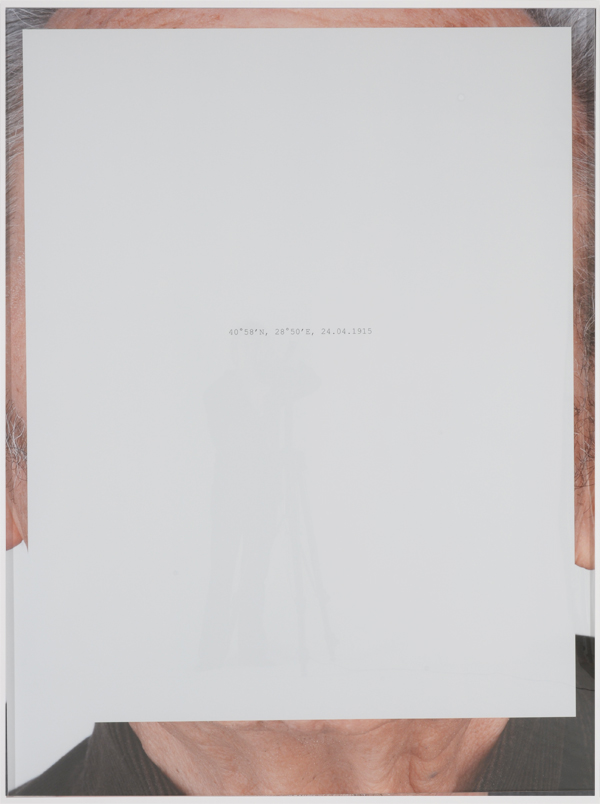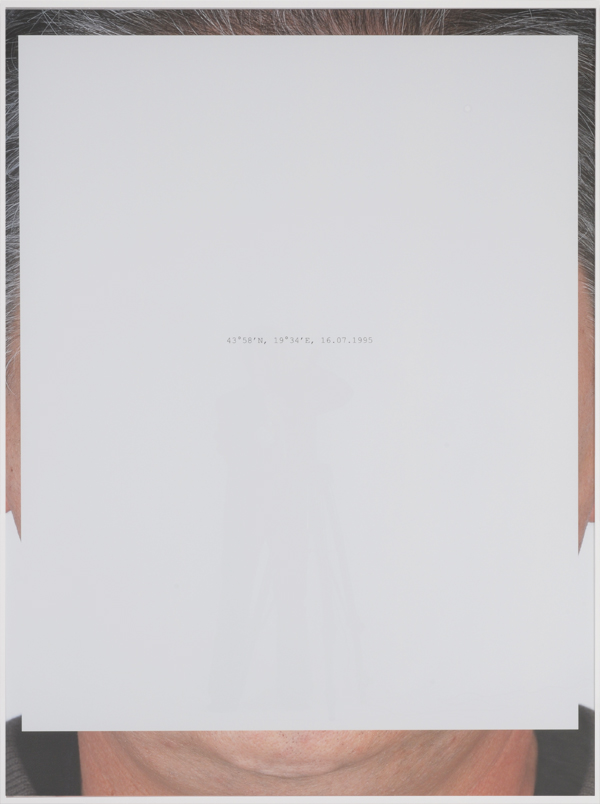Mirrors
—
2008
Five framed photographic prints, 205 x 155 cm.
Five giant ‘portraits’ of five different men create something akin to a choir in the exhibition space. The fact that this is about men, of different ages, is more or less the only information that we receive. Lorand has turned the conventions of the art of portraiture inside out. Usually, the most important information in a portrait is found in the centre of the image, with the person’s eyes as the anchor point, while the frame diverts our gaze, removing the background against which the person was portrayed from our attention. Here, the opposite is happening. The faces of the portrayed men are veiled behind a white surface. Only at the edge of the image do we see a segment of the neck, the ears, a receding hairline…. Their ‘faces’ are replaced by a numerical code. On the white surface, we read a small set of coordinates and a date. In these gigantic white mirrors, instead of the suffering figure of the Redeemer – to which the title of the installation refers, as does the form of the portraits – we confront the contemporary, secularized man. The geographical indications and dates refer to five globally acknowledged genocides of the 20th century.
They are Constantinople, Armenia, 1915: Auschwitz Birkenau, Poland, 1944; Phnom Penh, Cambodia, 1978; Bisesero, Rwanda, 1994; and Pilica, Serbia, 1995.
Michel Lorand wants to remember, yet he shows us almost nothing. His memorial is a blank slate, and it invites the viewer merely to look at himself in the mirror of our collective memory, to reflect for a moment on the human condition.
—